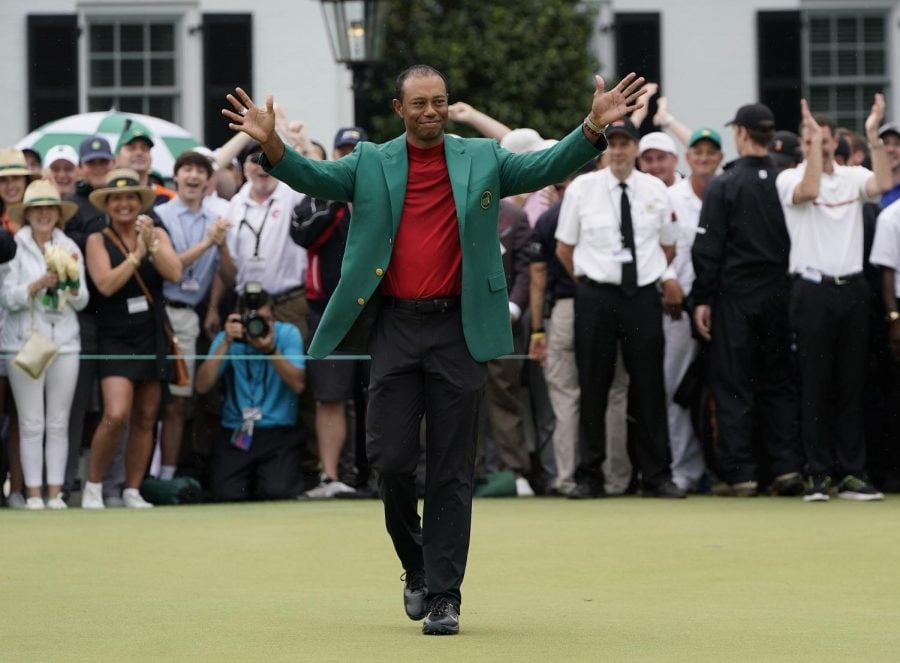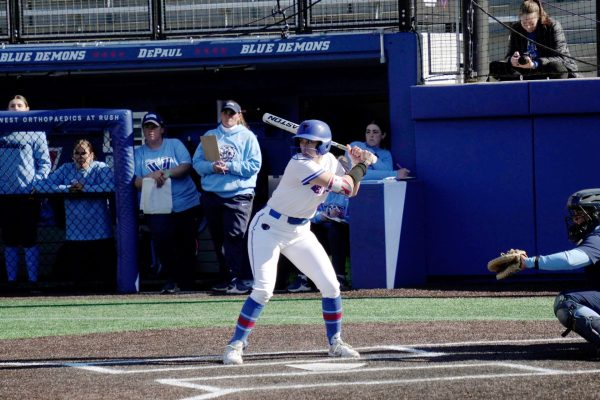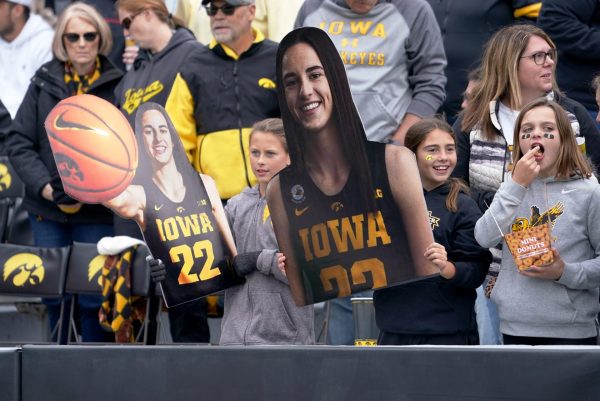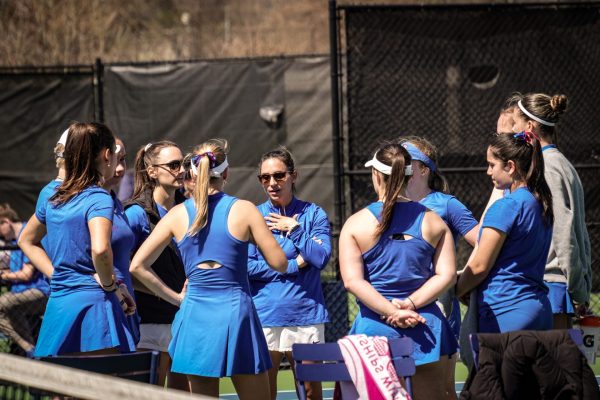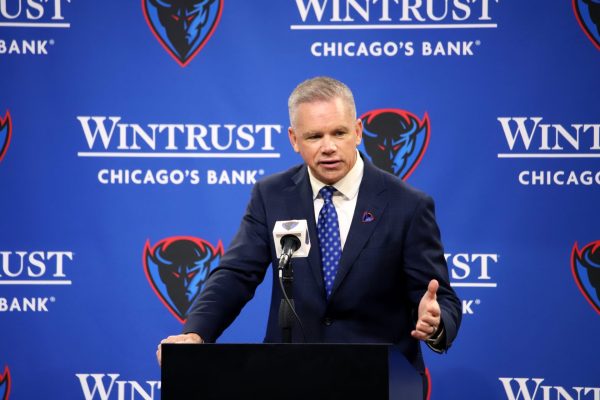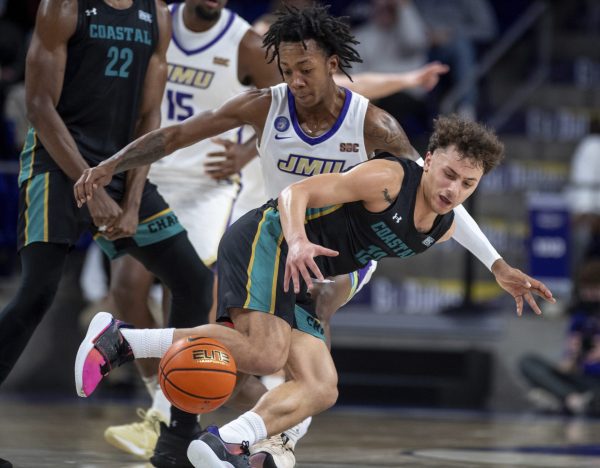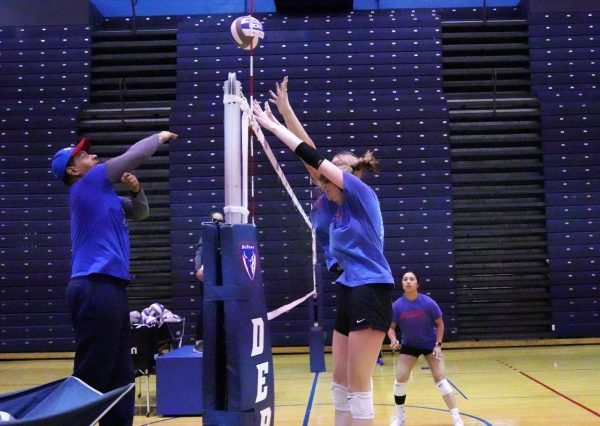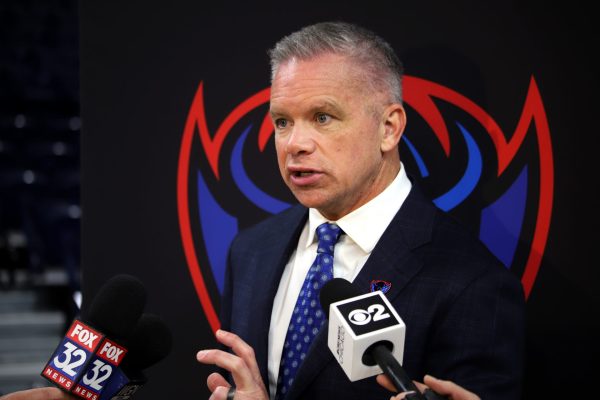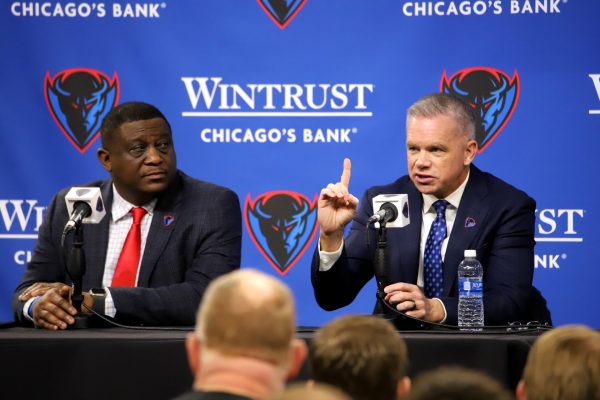COMMENTARY: A reformed, more human Tiger Woods does the impossible
David J. Phillips | Associated Press
Tiger Woods addresses a massive gallery around the 18th green at Augusta National Golf Club after winning his 15th major title.
What Tiger Woods has done in his career—which one could argue began at the age of two on the Mike Douglas show in 1978—isn’t human.
What he did last weekend at the Masters, on the other hand, was remarkably human.
As a prodigy junior golfer, his contemporaries would scramble for second place. Victory wasn’t an option. He won three consecutive U.S. Junior Amateur titles, followed immediately by three straight U.S. Amateur titles. Then he won the NCAA Division 1 title as a Stanford University freshman for good measure.
The next year in 1997 he won the Masters Tournament at record 18-strokes under par, beating the field by a record 12 strokes in his first full season on the PGA Tour. Woods then embarked on a campaign of dominance never before seen in sports, winning 14 major championships and more than 70 professional tournaments. He would spend a total of 683 weeks of his career ranked No. 1 in the world. Almost all achieved before the age of 30.
Woods was a machine. His command: dominate.
And then he fell.
A long series of affairs turned his life into an issue of The Daily Mail while his marriage burned to the ground with the cameras rolling. His injuries compounded, and the army of athletes he brought into the sports slowly started to pass him by. Once the undisputed No. 1 player in the world—arguably the best of all time—the chosen one fell below No. 1,000 in the Official World Golf Rankings.
In 2013 Woods made a brief return to form, winning an astonishing 5 tournaments on his way to PGA Tour Player of the Year honors for the 11th time. But shortly after, his body started to fail him once again.
Surgery after surgery, Woods had reached a new bottom and a new distance from where he once stood in the game of golf. Fans and media asked increasingly dire questions. Would Woods ever win another major championship? Would he ever win another tournament? Would he ever play professional golf again? Will he ever be able to play with his kids?
On May 29, 2017, Woods was arrested for driving under the influence near his home in Jupiter, Florida, which he says was the result of mixing a number of pain medications he was taking after back surgery. Effectively bed-ridden and his public image in shambles, a comeback seemed more unlikely than ever before.
But the surgery worked and from the wreckage of his old life emerged a distinctly new person and player. A more human version of his old self.
Woods’ reputation off the golf course was always at odds with what he did on the course. With grass under his feet and a club in his hand, Woods was a showman—a magician of sorts. But off the course, his life was something of a mystery. He was never particularly kind to reporters, seldom offering a glimpse into his personal life. He almost never interacted with his own fans, however loyal they may be.
But suddenly in 2018, Woods could be found smiling in press conferences. He opened up about his struggles, the despair he felt being away from the game and his motivation to keep going.
“My kids know me as the YouTube golfer,” Woods said in a press conference last year. When he won his last major in 2008, he had an infant daughter with a son on the way. Both have grown up more familiar with major surgeries than major championships.
Woods is no longer a machine hell-bent on shattering records and branding his legacy into history. Now, he finds himself playing for something—his children—in an utterly human pursuit of greatness.
And that’s what made the 2019 tournament so special. Even before the opening tee shot, Augusta National was buzzing about Woods and his campaign for his 15th major championship—his first as someone human and relatable. 2017 DePaul University graduate and avid golf fan Nick Petrakos scored himself a ticket for Wednesday’s practice rounds and said it wasn’t very hard to find the Big Cat.
“You could tell exactly where Tiger was at because of the swarm of people.” Petrakos said. “You have all of these great players, guys like Phil [Mickelson], Adam Scott, all these past champions are playing practice rounds and everyone is following Tiger. It’s incredible. It’s incredible the army and the following behind him.”
The crowds around Woods continued to grow throughout the week as he plotted his way into contention and the final grouping on Sunday. After a critical mistake from 54-hole leader Francesco Molinari on the devilish par-3 12th hole, Woods swung into the lead and never let it go.
“I was in the library in my normal spots with a couple other students over in the quiet area of the library and we were all watching on our computers,” Petrakos said. “When he won you could tell other people were watching the Masters, too. You could hear a couple claps in the back, I heard a little ‘woo!’ like people were cheering.”
He tapped in his final putt, roared back at a ruckus crowd and embraced his son just off the back of 18th green, mirroring the classic image of Woods hugging his father in the exact same sport 22 years ago. In that moment, his career seemed to come full circle, giving a second breath to perhaps the most storied career in the history of sport.
“Ever since [his last Masters win], with all the stuff he’s been going through, it just kind of didn’t make sense for him to win,” Petrakos said.
It didn’t make sense. But then again, nothing Woods ever did made sense. So when we all watched Woods accomplish something that seemed impossible less than three years ago, maybe we shouldn’t have been all that surprised.
CORRECTION: This article previously stated that Tiger Woods spent 638 weeks ranked No.1 in the world. He was actually ranked No. 1 for 683 weeks.


